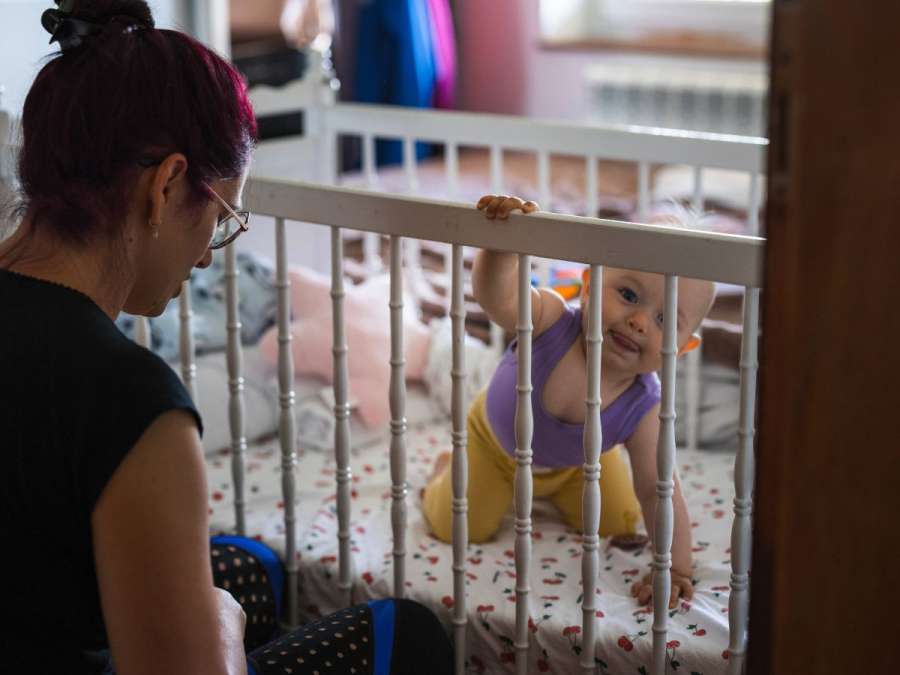Sudden infant death syndrome (SIDS) is a haunting fear for parents. While it primarily affects infants, it is essential to be careful when your child transitions into their toddlerhood as well. This article looks into SIDS prevention for toddlers. It explores the risks, safety measures, and practical steps to ensure your little one’s well-being.
This article seeks to highlight the causes, risk factors, and protective measures associated with this mysterious event. Even as children grow and surpass their most vulnerable infant stage, parents must remain careful, understanding the nuances of safe sleep environments and other protective practices. This article provides a look at the latest recommendations and research, offering families peace of mind and strategies to safeguard their babies during these early years.
1. Understanding SIDS
a. What Is SIDS?
Sudden Infant Death Syndrome (SIDS) is the unexplained death of an otherwise healthy baby under one year old, typically during sleep.
b. SIDS Risk Factors

\Factors such as young age, sleep environment, and family history can increase the risk of SIDS.
2. SIDS in Toddlers
a. SIDS Beyond Infancy
SIDS primarily affects infants, but rare instances have been reported in toddlers.
b. Recognizing SIDS in Toddlers

Watch for unusual sleep behaviors and always seek immediate medical attention for unresponsive or abnormal breathing.
3. Toddler Sleep Safety
a. Creating a Safe Sleep Environment
Ensure toddlers sleep on a firm mattress with a snug-fitted sheet and appropriate bedding.
b. Room Sharing vs. Bed Sharing

Room-sharing, where the toddler sleeps in the same room but not the same bed, is safer and reduces SIDS risk.
4. SIDS Prevention Measures
a. Back to Sleep
Always lay toddlers on their backs for sleep, mirroring infant recommendations.
b. Avoiding Soft Bedding

Steer clear of soft pillows, blankets, and bumper pads to mitigate suffocation risks.
5. Appropriate Sleepwear
a. Dressing Your Toddler for Sleep
Choose breathable sleepwear that fits well to prevent overheating or entanglement.
b. Avoiding Overheating

Monitor room temperature and ensure toddlers remain cool and comfortable during sleep.
6. Pacifiers and SIDS Prevention
a. The Pacifier Factor
Research suggests using a pacifier during sleep might reduce the risk of SIDS.
b. Safe Pacifier Practices

Introduce pacifiers safely, ensuring cleanliness and appropriate size for toddlers.
7. Smoke Exposure and SIDS Risk
a. Smoking Hazards
Tobacco smoke exposure elevates SIDS risk due to its harmful effects on respiratory and immune systems.
b. Keeping a Smoke-Free Home

Ensure a smoke-free environment at home, emphasizing no smoking near the toddler.
8. Breastfeeding and SIDS Prevention
a. The Breastfeeding Connection
Breastfeeding can potentially decrease the risk of SIDS by bolstering the toddler’s immune system.
b. Safe Sleep After Feeding

Always return the toddler to a safe sleep position after breastfeeding.
9. Immunizations and SIDS Prevention
a. The Role of Immunizations
Staying on the recommended immunization schedule can fortify defenses and may reduce SIDS risk.
b. Keeping Vaccinations Up to Date

Regularly consult with doctors to ensure timely toddler vaccinations.
10. Monitoring and Co-Sleeping Considerations
a. Toddler Monitoring
Using a baby monitor can offer added reassurance by allowing parents to observe sleep patterns.
b. Co-Sleeping Safely

If choosing to co-sleep, always follow safety guidelines to minimize risks.
11. Seeking Professional Guidance
a. When to Consult a Pediatrician
Seek medical advice if concerned about potential SIDS risks or sleep behaviors.
b. Grief and Support

For families affected by SIDS, various resources and support groups can assist in navigating the grief journey.
While SIDS primarily affects infants, it is crucial to maintain a safe sleep environment. Follow SIDS prevention measures as your child transitions into toddlerhood. By staying informed and implementing these safety practices, you can provide your toddler with a secure and comfortable sleep environment. This will also reduce the risk of SIDS and ensure their well-being as they grow.
